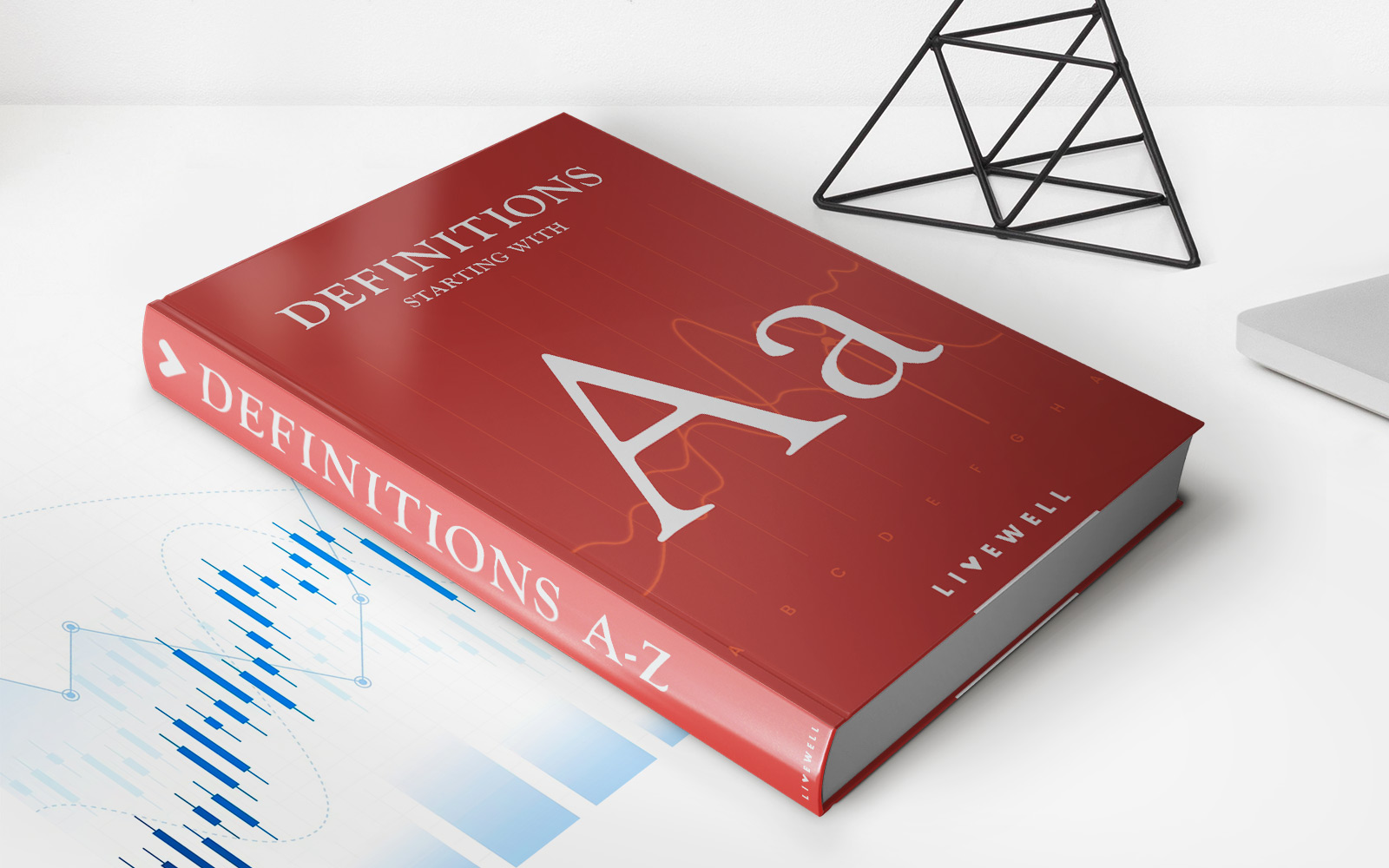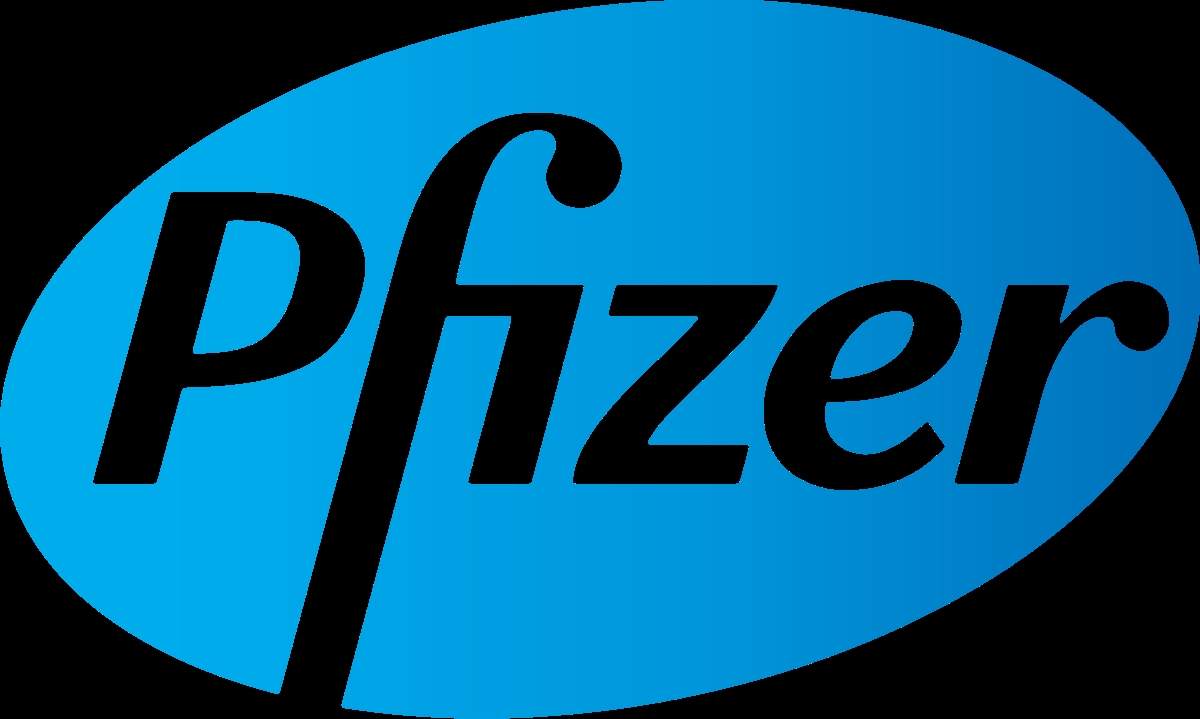

Finance
What Does Credit Line Available Mean
Modified: January 10, 2024
"Learn what credit line available means in the world of finance, and how it can affect your borrowing and spending capabilities."
(Many of the links in this article redirect to a specific reviewed product. Your purchase of these products through affiliate links helps to generate commission for LiveWell, at no extra cost. Learn more)
Table of Contents
Introduction
Managing finances and credit is an essential aspect of personal and business success. As you navigate the world of credit, you may come across various terms and concepts that may be unfamiliar to you. One such term is “credit line available.” Understanding what credit line available means and its significance can help you make informed financial decisions and effectively manage your credit.
When you are approved for a line of credit, such as a credit card or a personal loan, you are given a specific credit limit. This credit limit represents the maximum amount of money you can borrow or spend using that particular credit account. However, the credit line available refers to the amount of credit that you can still utilize from your total approved credit limit.
For example, let’s say you have a credit card with a total credit limit of $10,000. If you have used $3,000 of your available credit, then your credit line available would be $7,000. It is essential to understand and monitor your credit line available, as it directly impacts your borrowing potential and financial flexibility.
Knowing your credit line available can help you manage your spending and prevent exceeding your credit limit. It also provides an indication of your borrowing capacity and helps you plan for any future financial needs or emergencies. Additionally, it plays a crucial role in determining your credit utilization ratio, a factor that affects your credit score.
In the following sections, we will delve deeper into how credit line available is calculated, the importance of monitoring it, factors that can affect it, strategies for managing and increasing it, and the relationship between credit line available and your credit score. By understanding these aspects, you will be better equipped to make informed financial decisions and leverage your credit effectively.
Definition of Credit Line Available
Credit line available refers to the amount of credit that you have not yet utilized from your approved credit limit. It represents the remaining borrowing capacity or spending power that you have on a particular credit account, such as a credit card or a line of credit.
When you are approved for a credit account, the issuing financial institution sets a specific credit limit. This credit limit represents the maximum amount of money that you can borrow or spend using that particular credit account. Your credit line available is simply the difference between your credit limit and the amount you have already utilized.
For example, if you have a credit card with a credit limit of $10,000 and you have made purchases totaling $3,000, then your credit line available would be $7,000. This means you can still spend or borrow up to $7,000 without exceeding your credit limit.
Monitoring your credit line available is crucial for managing your credit effectively. It helps you avoid exceeding your credit limit, which can lead to penalties, increased interest rates, and a negative impact on your credit score. By keeping an eye on your credit line available, you can make informed decisions about your borrowing and spending, ensuring that you stay within your credit limits.
It’s worth noting that credit line available is different from available credit balance. While credit line available represents the remaining unused credit from your credit limit, available credit balance refers to the actual balance remaining on your credit account after accounting for payments and charges. So even if you have a high credit line available, if you have a high outstanding balance, your available credit balance may be significantly lower.
Understanding the concept of credit line available is essential for managing your credit wisely. By knowing how much credit you have available, you can plan your spending, keep your balances in check, and maintain a positive credit standing.
How Credit Line Available is Calculated
The calculation of credit line available is a relatively straightforward process. It involves deducting the amount of credit you have already utilized from your approved credit limit. Here’s the step-by-step process:
- Start with your approved credit limit: The issuing financial institution sets a specific credit limit for your credit account. This represents the maximum amount of money you can borrow or spend using that particular credit account.
- Identify the amount you have utilized: Review your credit account statement or online banking portal to determine the amount of credit you have already utilized. This includes any outstanding balances, charges, or cash advances that you have made using your credit account.
- Subtract the amount utilized from the credit limit: Subtract the total amount you have utilized from your approved credit limit. The resulting figure represents your credit line available, which is the remaining borrowing capacity or spending power you have on your credit account.
For example, suppose you have a credit card with a credit limit of $10,000 and you have already made purchases totaling $3,000. The calculation of your credit line available would be as follows:
$10,000 (Approved credit limit) – $3,000 (Amount utilized) = $7,000 (Credit line available)
In this case, your credit line available would be $7,000, which means you can still spend or borrow up to $7,000 without exceeding your credit limit.
It’s important to note that your credit line available can fluctuate over time as you use your credit account and make payments towards your outstanding balances. Regular monitoring of your credit line available is crucial to ensure that you are aware of your borrowing capacity and can make informed financial decisions.
Some financial institutions may provide ways to check your credit line available through their online banking platforms or mobile apps. It’s recommended to utilize these tools to keep track of your available credit and stay within your credit limits.
Importance of Credit Line Available
The credit line available plays a crucial role in managing your credit effectively and maintaining financial stability. Here are some key reasons why understanding and monitoring your credit line available is important:
- Borrowing Capacity: Your credit line available represents your remaining borrowing capacity or spending power on a particular credit account. By knowing how much credit you have available, you can plan your borrowing and spending accordingly. It helps you make informed decisions about taking on new debt or making large purchases.
- Financial Flexibility: Having a healthy credit line available provides you with financial flexibility. It allows you to handle unexpected expenses or emergencies without maxing out your credit limit. By keeping your credit line available, you can have access to funds when you need them the most.
- Credit Utilization Ratio: One of the factors that affect your credit score is the credit utilization ratio, which is the percentage of your credit limit that you have utilized. Monitoring your credit line available helps you keep your credit utilization ratio low. A lower credit utilization ratio indicates responsible credit management and can positively impact your credit score.
- Debt Management: By knowing your credit line available, you can effectively manage your outstanding balances and avoid accumulating excessive debt. It allows you to keep track of how much credit you have utilized and make necessary adjustments to your spending habits if needed.
- Preventing Credit Limit Exceedance: Exceeding your credit limit can have negative consequences, including penalties, increased interest rates, and potential damage to your credit score. Monitoring your credit line available can help you avoid reaching or surpassing your credit limit, ensuring that you stay within your approved credit boundaries.
Overall, understanding and monitoring your credit line available is essential for maintaining financial stability, making informed borrowing decisions, and protecting your creditworthiness. It allows you to have a clear picture of your borrowing capacity, plan your financial goals, and stay in control of your finances.
Factors that Affect Credit Line Available
Several factors can influence your credit line available and impact your borrowing capacity. It’s important to be aware of these factors as they can play a significant role in determining the amount of credit you have available. Here are some key factors that can affect your credit line available:
- Payment History: Your payment history is a crucial factor that lenders consider when determining your credit line available. Consistently making on-time payments and maintaining a positive payment history can increase your chances of being offered a higher credit line available.
- Credit Score: Your credit score is a numerical representation of your creditworthiness. Lenders often use credit scores to assess the risk of lending to you. Higher credit scores are associated with better credit options, including higher credit limits and larger credit line available.
- Income and Financial Stability: Lenders may also consider your income and financial stability when determining your credit line available. A higher income and stable employment can indicate that you have the means to manage your debts responsibly, potentially leading to a higher credit line available.
- Debt-to-Income Ratio: Your debt-to-income ratio is the percentage of your monthly income that goes towards paying off debt. Lenders may evaluate your debt-to-income ratio to assess your ability to handle additional credit. A lower debt-to-income ratio may increase your chances of obtaining a higher credit line available.
- Credit History: Your credit history, including the length of your credit accounts, can impact your credit line available. Lenders often look at the length and stability of your credit history to determine your creditworthiness. A longer credit history with a positive track record may result in a higher credit line available.
- Relationship with the Lender: Building a positive relationship with your lender can also influence your credit line available. Demonstrating responsible credit behavior, such as timely payments and maintaining low credit utilization, may lead to increased trust from the lender and potential increases in your credit line available over time.
- Economic Conditions: Economic factors, such as market conditions and financial stability, can indirectly impact your credit line available. During economic downturns or periods of instability, lenders may become more cautious and tighten credit limits, affecting your credit line available.
It’s important to note that the specific factors and their weightage may vary between lenders and credit products. Additionally, different lenders may have their own proprietary algorithms to assess creditworthiness and determine credit line available.
By understanding these factors, you can take steps to improve your creditworthiness, maintain a positive credit profile, and potentially increase your credit line available over time.
Managing and Increasing Credit Line Available
Managing your credit line available effectively is crucial for maintaining healthy financial habits and maximizing your borrowing capacity. Here are some strategies to help you manage and potentially increase your credit line available:
- Monitor Your Credit Utilization: Keep a close eye on your credit utilization ratio, which is the amount of credit you have utilized compared to your total credit limit. Aim to keep your credit utilization ratio below 30% to maintain a healthy credit profile and potentially increase your credit line available.
- Make Timely Payments: Pay your credit accounts on time to establish a positive payment history. Late payments can negatively impact your creditworthiness and may result in penalties and decreased credit line available.
- Reduce Debt and Outstanding Balances: Minimize your outstanding balances on credit accounts to improve your creditworthiness and potentially increase your credit line available. Make efforts to pay off debts and keep your credit card balances low.
- Build a Positive Credit History: Maintain a positive credit history by being responsible with your credit accounts. Avoid opening too many new credit accounts within a short period, as it can indicate excessive credit reliance and may negatively affect your credit line available.
- Communicate with Your Lender: If you consistently demonstrate responsible credit behavior, consider contacting your lender to discuss the possibility of increasing your credit line available. Some lenders may be open to reviewing your credit limit based on your improved financial circumstances.
- Apply for a Credit Line Increase: Another option is to proactively request a credit line increase from your lender. Before doing so, ensure that you have a positive payment history and can demonstrate your ability to handle additional credit responsibly.
- Review and Optimize Your Credit Mix: Maintaining a diverse credit mix, including credit cards, loans, and other types of credit, can positively impact your creditworthiness. However, ensure that you only take on credit accounts that you can manage effectively.
- Regularly Review Your Credit Reports: Obtain free copies of your credit reports from the major credit bureaus (Equifax, Experian, and TransUnion) and review them for accuracy. Dispute any errors or inaccuracies that may impact your creditworthiness and credit line available.
Remember, managing and increasing your credit line available requires responsible credit management, timely payments, and demonstrating good financial habits. It’s essential to stay within your means and borrow within your limits to maintain a healthy credit profile and ensure that you can access credit when needed.
When considering any changes to your credit line available, it’s advisable to consult with a financial advisor or credit professional who can provide personalized guidance based on your specific circumstances.
The Relationship between Credit Line Available and Credit Score
Your credit line available has a significant impact on your credit score, which is a numerical representation of your creditworthiness. Understanding the relationship between credit line available and credit score is essential for managing your credit effectively. Here’s how they are interconnected:
Credit Utilization Ratio: One of the primary factors in calculating your credit score is your credit utilization ratio. This ratio compares the amount of credit you have utilized to your total available credit. A lower credit utilization ratio indicates responsible credit management and can positively impact your credit score.
By keeping your credit line available and using only a portion of your credit limit, you can maintain a low credit utilization ratio. Lenders view borrowers with low credit utilization ratios as less risky, which can improve your creditworthiness and ultimately raise your credit score.
Impact of Maxed-out Credit Accounts: Maxing out your credit accounts and utilizing the entire credit limit can have a negative impact on both your credit line available and your credit score. When lenders see that you have utilized your entire credit limit, it suggests a higher risk of default or difficulties in managing your debts.
To maintain a healthy credit score, it’s advisable to keep your credit accounts within a reasonable utilization range, ideally below 30% of your total available credit. By doing so, you demonstrate responsible credit management and ensure that you have a sufficient credit line available for emergencies or unexpected expenses.
Managing Multiple Credit Accounts: Using credit responsibly across multiple accounts can also influence your credit line available and credit score positively. Having a diverse credit mix, such as a combination of credit cards, loans, and other types of credit, can showcase your ability to manage different credit obligations.
When lenders see that you have multiple credit accounts, each with a reasonable credit line available and a history of responsible use, it can help strengthen your creditworthiness. This can have a positive impact on your credit score, as lenders perceive you as a reliable borrower.
Regular Monitoring and Credit Health: Monitoring your credit line available and overall credit health is crucial for maintaining a positive credit score. By regularly reviewing your credit reports and understanding the factors that affect your credit score, you can take proactive steps to manage your credit effectively.
Keeping your credit line available and credit score in good standing allows you to access better credit opportunities, such as higher credit limits, lower interest rates, and favorable loan terms. It also demonstrates financial responsibility to potential lenders and improves your chances of future credit approvals.
Remember that maintaining a healthy credit line available and a good credit score requires consistent and responsible credit management. This includes making timely payments, keeping your credit utilization low, and managing your debts effectively.
Conclusion
Understanding the concept of credit line available is crucial for effectively managing your credit and making informed financial decisions. It represents the amount of credit you have not yet utilized from your approved credit limit and plays a significant role in determining your borrowing capacity and financial flexibility.
By monitoring your credit line available, you can keep track of your spending, avoid exceeding your credit limit, and maintain a positive credit profile. It also affects your credit utilization ratio, which is a key factor in determining your credit score. By keeping your credit utilization low and having a healthy credit line available, you can improve your creditworthiness and increase your chances of obtaining favorable credit terms in the future.
Factors such as payment history, credit score, income, and debt levels can affect your credit line available. By managing these factors responsibly and demonstrating good financial habits, you can potentially increase your credit line available over time.
Remember to make timely payments, reduce outstanding balances, and maintain a diverse credit mix to optimize your credit line available and credit score. Regularly reviewing your credit reports and staying informed about your credit health is crucial for maintaining a positive credit profile.
In conclusion, understanding and managing your credit line available is essential for maintaining financial stability, maximizing your borrowing potential, and achieving your financial goals. By staying within your credit limits, making responsible credit decisions, and monitoring your credit line available, you can navigate the world of credit with confidence and achieve long-term financial success.













